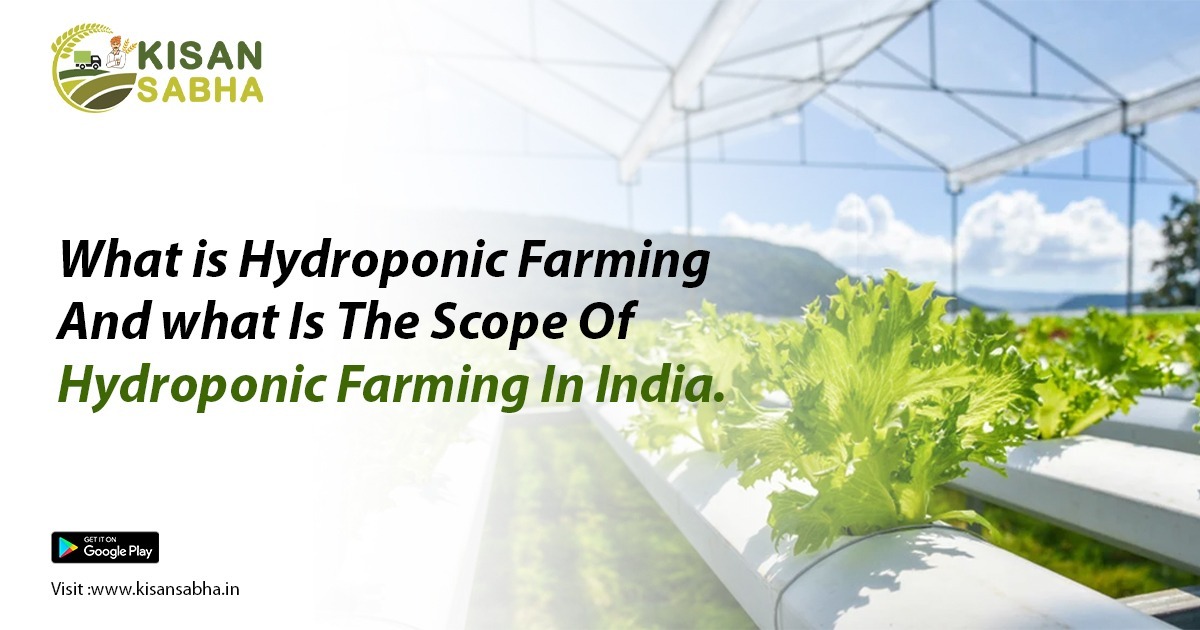By 2050, there will be 9.8 billion people on the planet, 68 percent of whom will live in cities, and we will need to increase food production by about 70 percent to meet their daily needs. Fortunately, the agricultural system we currently have can handle this significant task. If we assumed a linear increase in yield from our agricultural output over the last 50 years, we would not be close to reaching this level of progress by 2050.
New technologies are created all across the world every day. With an increasing worldwide population, the agriculture industry is developing novel ways to produce food with less water and less land. The hydroponic growth system is pointing in this way.
Hydroponics, also referred to as “soilless farming,” is a method of growing crops. In a hydroponic system, plants’ roots grow in damp inert materials like Rockwool and Vermiculite or inside a liquid fertiliser solution. The liquid fertiliser solution is made by mixing essential plant nutrients with water.
The plant roots are suspended by a fluid solution that is either static or constantly flowing with nutrients.

In India, hydroponics is becoming more and more popular, attracting more and more farmers. In its simplest form, hydroponics is a subset of hydroculture, which is a method for growing plants, usually crops, without soil by using nutrient mineral solutions dissolved in water as a solvent.
Hydroponic farming, often known as soilless, water-based gardening, can be done in even a small space like a balcony. The disadvantages of soil-based approaches are significantly reduced because crops are fed with nutrient-rich water rather than using dirt to feed plants.
You can take a simple yet effective step by starting a hydroponics farm in India. Growing industries include hydroponic farming.
Aquaponics, hydroponics, and other modern farming techniques are covered in numerous public and private institutions’ certification and certificate programmes.
Most of the contemporary farming techniques courses are provided in both short- and long-term formats.
Hydroponic farming advantages
There has been a lot of negative news about traditional field agricultural practises, including pieces about soil erosion, excessive water consumption, and outbreaks of food-borne illnesses.
The hydroponic farming industry addresses several of these problems.
Here are some advantages of hydroponic farming:
Lower Space
Soil-grown plants must extend their roots as far as they can to find the water and all the nutrients they need to survive. This suggests that they should be planted a specific distance apart. In hydroponic systems, nutrients and water are delivered right to the roots, eliminating the need for roots to spread. In the same amount of space, hydroponic systems can grow more plants than soil-based systems.
Water-saving measures
Did you know that agricultural farms use the most water? Farming in the fields uses a lot of water because of water loss. Evaporation, rolling away, and puddles render a large portion of the water ineffective. Hydroponic systems use about ten times less water since water is dispersed in a regulated way. Some systems even cycle water to utilise less energy!
Less chemical
The use of pesticides and herbicides is decreased as a result of the use of hydroponic systems, which do not totally eradicate pest issues but do lessen their possibility. Since hydroponic systems are meticulously maintained, weeds cannot take over your garden. Thus, herbicides are not necessary. Furthermore, since hydroponic systems are typically installed inside, where they are less susceptible to insect invasion, pesticides are not necessary.
Faster Growth
Hydroponic plants grow between 30% and 50% quicker than those cultivated in soil. Crops cultivated in hydroponic systems grow more swiftly (like weather and pests) because they receive the correct amount of nutrients and are produced indoors. Various animals move at varying speeds. For instance, hydroponic systems often promote the growth of leafy greens like lettuce and fruits like tomatoes.
Management of Nutrients
Thanks to hydroponic systems, which feed plants with a nutrient solution diluted with water, the farmer has more control over the nutrients their crops absorb. Fertilisers could be necessary for a cultivar that was grown in soil to survive. However, under hydroponics, the plants already receive all the support they need in the right amounts.
Grow Inside
Another benefit of indoor hydroponic cultivation is its simplicity. Growing inside has many benefits, such as year-round growth, the capacity to regulate climate and temperature, and the absence of pests. Usually employed inside, hydroponic systems are utilised to control the environment. When the growing environment is almost perfect, plants develop more quickly and are stronger.
Better Plant Health
Stronger plants are produced by hydroponic farming than by soil farming. Because there is no soil in hydroponics, for instance, diseases that are carried through it cannot thrive and spread. Furthermore, plants may concentrate on growing rather than having to spread their roots out in search of food.
Market Potential For Hydroponic Agriculture
Between 2020 and 2027, the hydroponics market in India is anticipated to expand at a CAGR of 13.53 percent. In contrast, only 6.8% growth is predicted for the worldwide hydroponics market. In metros and tier 1 cities, the demand for organic crops is enormous. Health-conscious customers who are willing to pay more for organic produce that is fresh, safe, and healthy make up the market for hydroponic farming products in India. The price differences between hydroponic technology and state and federal incentives to set up hydroponic farms on their fields are also increasing their appeal. These factors, along with ongoing advancements in emerging technologies and a rise in food inflation, are increasing the use of these farming methods.
Read more at- www.kisansabha.in





